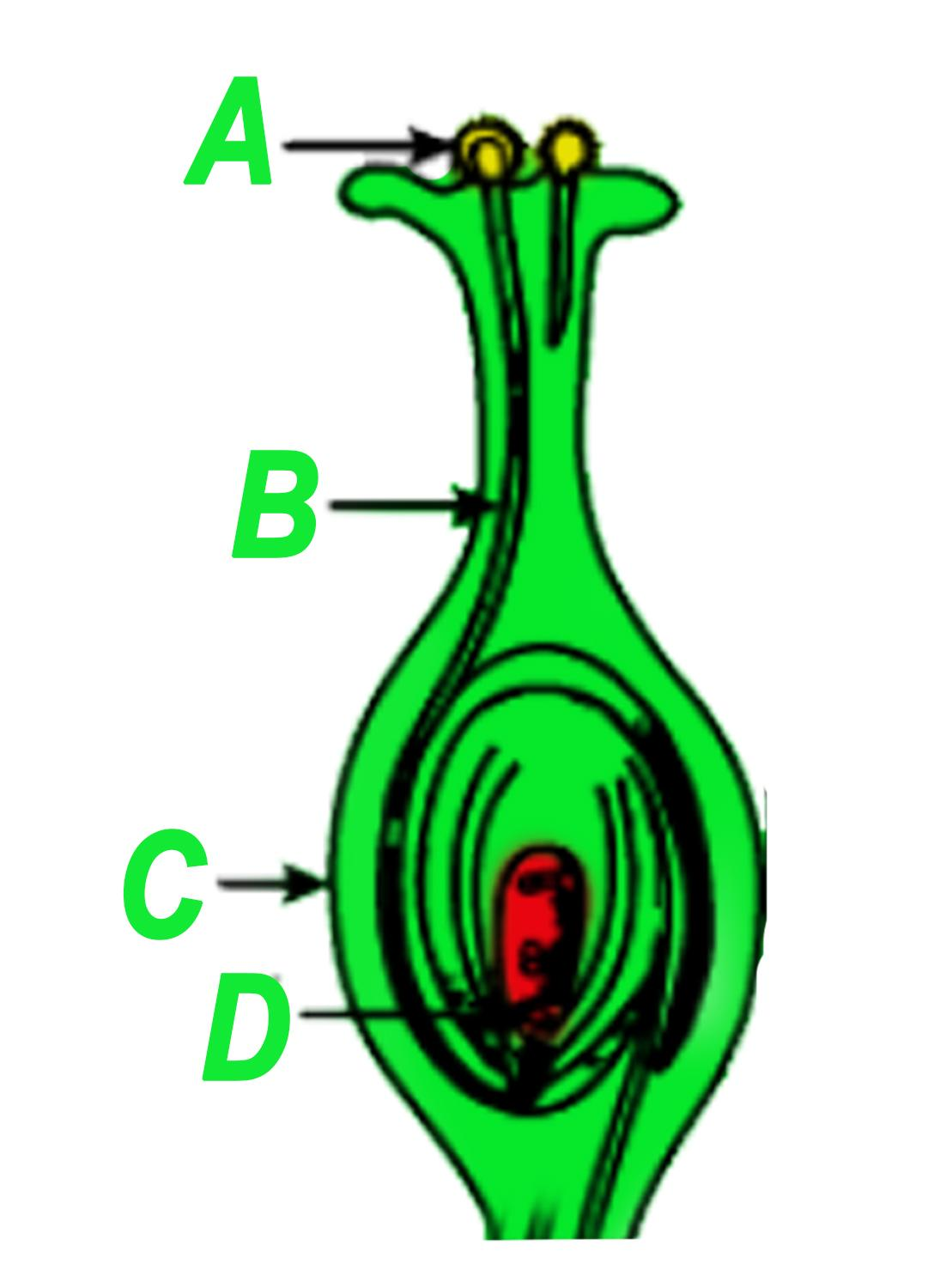
How does fertilization occur in flowers? Name the parts of the flower that develop into
(i) Seed and (ii) Fruit after fertilization.


Answer
473.7k+ views
Hint: Fertilization is defined as the fusion of haploid gametes, egg, and sperm, to form the diploid zygote. In plants, it takes place after the transfer of pollen grains to stigma.
Complete answer:
Fertilization in plants having flowers happens through a process called pollination. The pollination process occurs when pollen grains from the anther land on a stigma. Fertilization occurs when one among the sperm cells fuses with the egg inside an ovule. When a pollen grain lands on the stigma of the acceptable flower, it makes a small tubule through style to the ovary. The pollen grain carries a male gamete which meets the feminine gamete within the ovule and fertilization takes in flowers. The cell which ends up after fusion of the gametes is called a zygote which further develops into an embryo.
After fertilization takes place, each ovule develops into a seed and the ovary develops into a fruit.
Additional information:
The fruit is known as the edible fleshy part of the plant that is consumed and obtained from the ripened ovary. It is a fleshy or dried but ripened ovary of a flowering plant which encloses single or multiple seeds. The outer edible part in normal fruits is made from the pericarp which was formed by the ovary and this fleshy part only surrounds the seed. The pericarp consists of three layers. Not all fruits have seeds present in them. Seedless fruits are also present in nature.
Note: The carpel is the female reproductive organ of a flower that consists of an ovary, stigma, and a style. If the gynoecium of the flower consists of a single carpel, it is known as a monocarpous. Carpel consists of the innermost whorl of the flower.
Complete answer:
Fertilization in plants having flowers happens through a process called pollination. The pollination process occurs when pollen grains from the anther land on a stigma. Fertilization occurs when one among the sperm cells fuses with the egg inside an ovule. When a pollen grain lands on the stigma of the acceptable flower, it makes a small tubule through style to the ovary. The pollen grain carries a male gamete which meets the feminine gamete within the ovule and fertilization takes in flowers. The cell which ends up after fusion of the gametes is called a zygote which further develops into an embryo.
After fertilization takes place, each ovule develops into a seed and the ovary develops into a fruit.
Additional information:
The fruit is known as the edible fleshy part of the plant that is consumed and obtained from the ripened ovary. It is a fleshy or dried but ripened ovary of a flowering plant which encloses single or multiple seeds. The outer edible part in normal fruits is made from the pericarp which was formed by the ovary and this fleshy part only surrounds the seed. The pericarp consists of three layers. Not all fruits have seeds present in them. Seedless fruits are also present in nature.
Note: The carpel is the female reproductive organ of a flower that consists of an ovary, stigma, and a style. If the gynoecium of the flower consists of a single carpel, it is known as a monocarpous. Carpel consists of the innermost whorl of the flower.
Recently Updated Pages
Master Class 9 General Knowledge: Engaging Questions & Answers for Success

Master Class 9 English: Engaging Questions & Answers for Success

Master Class 9 Science: Engaging Questions & Answers for Success

Master Class 9 Social Science: Engaging Questions & Answers for Success

Master Class 9 Maths: Engaging Questions & Answers for Success

Class 9 Question and Answer - Your Ultimate Solutions Guide

Trending doubts
State and prove Bernoullis theorem class 11 physics CBSE

Who built the Grand Trunk Road AChandragupta Maurya class 11 social science CBSE

1 ton equals to A 100 kg B 1000 kg C 10 kg D 10000 class 11 physics CBSE

State the laws of reflection of light

One Metric ton is equal to kg A 10000 B 1000 C 100 class 11 physics CBSE

Difference Between Prokaryotic Cells and Eukaryotic Cells




